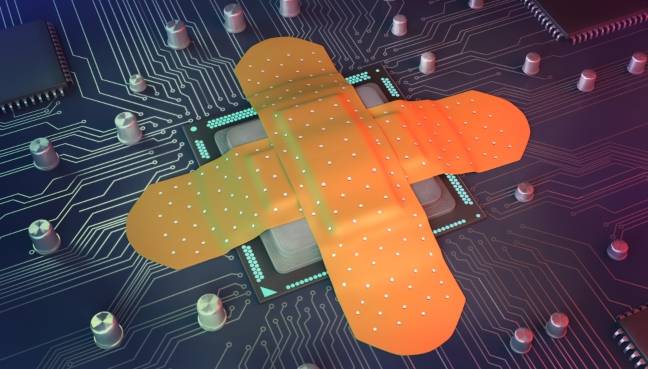BOOK THIS SPACE FOR AD
ARTICLE ADIt’s yet another hardware side-channel attack:
The threat resides in the chips’ data memory-dependent prefetcher, a hardware optimization that predicts the memory addresses of data that running code is likely to access in the near future. By loading the contents into the CPU cache before it’s actually needed, the DMP, as the feature is abbreviated, reduces latency between the main memory and the CPU, a common bottleneck in modern computing. DMPs are a relatively new phenomenon found only in M-series chips and Intel’s 13th-generation Raptor Lake microarchitecture, although older forms of prefetchers have been common for years.
[…]
The breakthrough of the new research is that it exposes a previously overlooked behavior of DMPs in Apple silicon: Sometimes they confuse memory content, such as key material, with the pointer value that is used to load other data. As a result, the DMP often reads the data and attempts to treat it as an address to perform memory access. This “dereferencing” of “pointers”—meaning the reading of data and leaking it through a side channel—is a flagrant violation of the constant-time paradigm.
[…]
The attack, which the researchers have named GoFetch, uses an application that doesn’t require root access, only the same user privileges needed by most third-party applications installed on a macOS system. M-series chips are divided into what are known as clusters. The M1, for example, has two clusters: one containing four efficiency cores and the other four performance cores. As long as the GoFetch app and the targeted cryptography app are running on the same performance cluster—even when on separate cores within that cluster—GoFetch can mine enough secrets to leak a secret key.
The attack works against both classical encryption algorithms and a newer generation of encryption that has been hardened to withstand anticipated attacks from quantum computers. The GoFetch app requires less than an hour to extract a 2048-bit RSA key and a little over two hours to extract a 2048-bit Diffie-Hellman key. The attack takes 54 minutes to extract the material required to assemble a Kyber-512 key and about 10 hours for a Dilithium-2 key, not counting offline time needed to process the raw data.
The GoFetch app connects to the targeted app and feeds it inputs that it signs or decrypts. As its doing this, it extracts the app secret key that it uses to perform these cryptographic operations. This mechanism means the targeted app need not perform any cryptographic operations on its own during the collection period.
Note that exploiting the vulnerability requires running a malicious app on the target computer. So it could be worse. On the other hand, like many of these hardware side-channel attacks, it’s not possible to patch.
Slashdot thread.
Tags: Apple, encryption, hardware, side-channel attacks
Sidebar photo of Bruce Schneier by Joe MacInnis.
.png)















 Bengali (Bangladesh) ·
Bengali (Bangladesh) ·  English (United States) ·
English (United States) ·